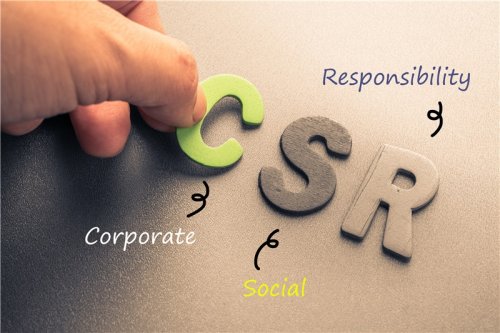CSR: International Trends

By CEIBS Associate Professor of Management Terence Tsai, Researchers Zhang Yunlu and Chen Lujie, and Research Assistant Liu Jie
Corporate social responsibility (CSR) is increasingly becoming an issue of great concern and, as a result, more and more CSR-related guidelines have been rolled out internationally even as legislation and regulations are being effectively improved in China. Meanwhile, different coalitions, codes of conduct, assessment methods and investment standards have been provided for companies. But even though the concept of CSR is widely recognised across the globe, there is still no consensus on what CSR is, what it covers, and how it is to be applied. This despite the fact that research has been carried out, in different countries, on CSR and related fields.
According to the school of classical economics, a company’s sole task is to seek maximum profit through legal means. Within that framework, a company – by nature – pursues economic gains, by which it is judged successful or not, and doesn’t seem to care about its social responsibility. However, with the development of social production and the rapid increase in the number and size of companies, the “stakeholder theory” has received much attention and has been a focus of research. In fact some researchers have put forward innovative views about CSR.
CSR-related research has had a significant influence on CSR practices. In an attempt to summarise international trends in CSR research, we have selected representative content from the voluminous research literature produced over the past few years.
Trend 1: Companies made less vulnerable thanks to CSR
During the unprecedented worldwide economic downturn that resulted from the financial crisis ten years ago, companies that had put more effort into performing social responsibility were less vulnerable to the setback.
According to a survey by three researchers from the United States and Britain (Lins, Servaes & Tamayo, 2017), during the financial crisis of 2008 – 2009, stock returns of companies with higher social capital (or more commitment to social responsibility) were generally 4 to 7% higher than those of companies with lower social capital. They made the discovery by selecting and comparing the August 2008 – March 2009 CSR data of 1,673 non-financial companies, based on social capital theory and relevant research. In the recovery period after the financial crisis, however, the perceived CSR performance didn’t seem to be related to stock returns. Overall, companies that enjoy more social capital due to more CSR commitment have a clear advantage when general corporate trustworthiness tends to be challenged. Under the normal scenario, on the other hand, the value of a company’s social capital is already embodied in its stock price. This discovery also shows that a company with a higher CSR rating usually has better profitability in a financial crisis, which means that a company must be mindful of building up its social capital in order to defend itself against possible turbulence from the outside.
 Trend 2: Consumers more picky about CSR
Trend 2: Consumers more picky about CSR
More and more companies worldwide are incorporating CSR into their daily operations. Their commitment to CSR has brought them high prestige and helped them strengthen ties with different stakeholders. Different companies have different approaches in meeting their CSR commitment.
It has been found that, compared with monetary means, non-monetary CSR events fare better in engaging consumers at an emotional level, which means consumers possibly prefer CSR events in non-monetary forms. Research on consumer feedback on CSR events (Hildebrand, Demotta, Sen & Valenzuela, 2017), showed that when the outcome is predicted as relatively uncontrollable, consumers react favourably to non-monetary CSR events; when the outcome is predicted as relatively controllable, consumers react favourably to monetary CSR events. In fact, the significance of the research is that CSR events can be appropriately selected and managed on the basis of whether consumer feedback on a certain event is controllable or uncontrollable.
Unfortunately, as CSR events multiply in number and form and receive extensive media coverage, consumers grow sceptical about “professed CSR commitment”. Some even believe that certain companies use CSR as a vanity project or simply as a façade to divert public attention and cover their real problems. Nevertheless, research also shows that such negative perceptions can be mitigated through the honest and concrete presentation of CSR information. All in all, it is because of the scepticism on the part of consumers that companies must convey CSR information in an economical and efficient way.
Trend 3: CSR has an increasing influence on employers & employees
Employees are the most important part of a company’s internal stakeholder groups. How an employee is treated in a company may deeply impact his psychological experience and directly determine his attitude and commitment to the company. In a survey about how companies may use CSR to improve employees’ participation and reduce workplace misbehaviour such as slacking off and absenteeism (Flammer & Luo, 2017), it was found that employee-related CSR improvement mainly happens in labour-intensive, highly competitive businesses that tend to depend on stakeholders. This is because CSR improvement helps increase employees’ creativity, distinguishes the company from its competitors, and reduces employee dissatisfaction with the negative aspects of the company’s image.
Based on research, in 2017, by Haski-Leventhal, Roza & Meijs, the Social Responsibility Matrix was created through a combination of identity and behaviour – the two dimensions of social responsibility. The quadrants into which the social responsibilities of employees and employers can be categorised are: low social responsibility, identity-based social responsibility, behaviour-based social responsibility and mixed social responsibility. The research points out that putting employees and employers in the same matrix is an important step in measuring CSR consistency and the possible effects on both parties. For example, an inconsistency between CSR identity and CSR behaviour may result in a loss of trust between employers and employees and even lead to misbehaviour.
The role of CSR manager is a relatively new career. A qualitative analysis of CSR managers in multinational corporations (Risi & Wickert, 2017) tried to determine if there is “symmetry” between systemisation and professionalisation. A rather interesting discovery is that CSR managers tend to be marginalised when the CSR system is being improved and consolidated; that is to say, the CSR manager is less important when the company has a better developed CSR system.
Trend 4: Skilful announcement of CSR information
In the past two decades, there has been significant improvement in the quantity and quality of CSR reports presented by large corporations around the world. However, these reports lack consistency in format, writing style and key elements, also the quality and accuracy of their content have yet to be systematically assessed. Therefore, research (Sethi, Martell & Demir, 2017) has been done in an attempt to analyse and assess CSR reports within the CSR-Sustainability Monitor framework.
This research covers the data in CSR reports of 614 large corporations in 43 countries, doing business in 20 different industries. The analysis shows that higher quality CSR reports usually have higher approval rates, while the size of a company is not conspicuously related to the approval rates of its CSR reports. Meanwhile, if a company does business in an industry that is highly sensitive to the environment and society, its CSR reports usually have higher approval ratings. In a regional comparison, companies in Western Europe have higher approval rates in their CSR reports than those in East Asia and North America, probably a result of different legal systems at the local level. The research presents three challenging tasks for CSR researchers and practitioners in terms of CSR reports: accurate disclosure, full disclosure, and diversity in approval provider. Only by announcing all the relevant facts in CSR reports and providing necessary explanations can a company truly win public trust.
Some researchers have carried out in-depth discussions about the content and form of CSR reports. They have found that, in their CSR reports, many companies explain their CSR strategies as a “focus on the community” or “global vision”, and often use a “texts & pictures” presentation style. Are these CSR reports “friendly” and effective enough for investors who deal with numbers all the time? According to existing research (Elliott, Grant & Rennekamp, 2017), the above method helps to increase investors’ willingness to invest in the company (especially investors who are less sensitive to numbers). In the meantime, research confirms that the style of disclosing information in a CSR report has an impact on people’s perception about the company’s values. In other words, when composing and designing its CSR report, a company must take the target audience into consideration and think about the best ways for the CSR information to be received.
Reference:
Lins, Karl V., Servaes, Henri & Tamayo, Ane. 2007, Social Capital, Trust, and Firm Performance: The Value of Corporate Social Responsibility during Financial Crisis. The Journal of Finance, 8, 1785-1823.
Hilderbrand, Diogo, Demotta, Yoshiko, Sen, Sankar & Valenzuela Ana, 2017, Consumer Responses to Corporate Social Responsibility (CSR) Contribution Type. Journal of Consumer Research, 44, 738-758.
Flammer, Caroline & Luo, Jiao, 2017. Corporate Social Responsibility from a Quasi-Experiment. Strategic Management Journal, 38, 163-183.
Haski-Leventhal, Debbie, Roza Lonneke & Meijs, Lucas C. P. M., 2017, Congruence in Corporate Social Responsibility: Connecting the Identity and Behavior of Employers and Employees. Journal of Business Ethics, 143: 35-51.
Risi, David & Wickert, Christopher, 2017, Reconsidering the ‘Symmetry’ Between Institutionalization and Professionalization: The Case of Corporate Social Responsibility Managers, Journal of Management Studies 54:5.
Sethi, S. Prakash Sethi, Martell, Terrence F. & Demir, Mert, 2017, Enhancing the Role and Effectiveness of Corporate Social Responsibility (CSR) Reports: The Missing Elements of Content Verification and Integrity Assurance. Journal of Business Ethics, 144: 59-82.
Elliott, W. Brooke, Grant, Stephanie M. & Rennekamp, Kristina M., 2017, How Disclosure Features of Corporate Social Responsibility Reports Interact with Investor Numeracy to Influence Investor Judgements. Contemporary Accounting Research, 34, 1596-1621.
This is an excerpt from an article of the same name in the 2017 CEIBS CSR Report.















